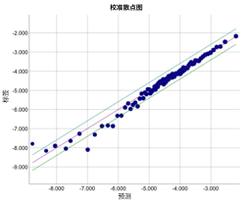如何以降序获取R数据帧的数字列的最大值?
为了获得R数据帧中的最高值,我们可以使用head函数,如果我们希望这些值以降序排列,则需要sort函数。因此,我们需要结合使用head和sort函数,以降序查找最高值。例如,如果我们有一个包含x列的数据帧df,则可以使用head(sort(df $x,decreasing = TRUE),n = 20)以降序找到x的前20个值。
示例
考虑以R为基础的CO2数据帧-
> str(CO2)输出结果
Classes ‘nfnGroupedData’, ‘nfGroupedData’, ‘groupedData’ and 'data.frame': 84 obs. of 5 variables:$ Plant :Ord.factorw/ 12 levels "Qn1"<"Qn2"<"Qn3"<..: 1 1 1 1 1 1 1 2 2 2 ...
$ Type : Factor w/ 2 levels "Quebec","Mississippi": 1 1 1 1 1 1 1 1 1 1 ...
$ Treatment: Factor w/ 2 levels "nonchilled","chilled": 1 1 1 1 1 1 1 1 1 1 ...
$ conc : num 95 175 250 350 500 675 1000 95 175 250 ...
$ uptake : num 16 30.4 34.8 37.2 35.3 39.2 39.7 13.6 27.3 37.1 ...
- attr(*, "formula")=Class 'formula' language uptake ~ conc | Plant
.. ..- attr(*, ".Environment")=
- attr(*, "outer")=Class 'formula' language ~Treatment * Type
.. ..- attr(*, ".Environment")=
- attr(*, "labels")=List of 2
..$ x: chr "Ambient carbon dioxide concentration"
..$ y: chr "CO2 uptake rate"
- attr(*, "units")=List of 2
..$ x: chr "(uL/L)"
..$ y: chr "(umol/m^2 s)"
示例
> head(CO2,20)输出结果
Plant Type Treatment conc uptake1 Qn1 Quebec nonchilled 95 16.0
2 Qn1 Quebec nonchilled 175 30.4
3 Qn1 Quebec nonchilled 250 34.8
4 Qn1 Quebec nonchilled 350 37.2
5 Qn1 Quebec nonchilled 500 35.3
6 Qn1 Quebec nonchilled 675 39.2
7 Qn1 Quebec nonchilled 1000 39.7
8 Qn2 Quebec nonchilled 95 13.6
9 Qn2 Quebec nonchilled 175 27.3
10 Qn2 Quebec nonchilled 250 37.1
11 Qn2 Quebec nonchilled 350 41.8
12 Qn2 Quebec nonchilled 500 40.6
13 Qn2 Quebec nonchilled 675 41.4
14 Qn2 Quebec nonchilled 1000 44.3
15 Qn3 Quebec nonchilled 95 16.2
16 Qn3 Quebec nonchilled 175 32.4
17 Qn3 Quebec nonchilled 250 40.3
18 Qn3 Quebec nonchilled 350 42.1
19 Qn3 Quebec nonchilled 500 42.9
20 Qn3 Quebec nonchilled 675 43.9
提取conc的前20个值-
示例
> head(sort(CO2$conc,decreasing=TRUE),n=20)输出结果
[1] 1000 1000 1000 1000 1000 1000 1000 1000 1000 1000 1000 1000 675 675 675[16] 675 675 675 675 675
提取摄取的前20个值-
示例
> head(sort(CO2$uptake,decreasing=TRUE),n=20)输出结果
[1] 45.5 44.3 43.9 42.9 42.4 42.1 41.8 41.4 41.4 40.6 40.3 39.7 39.6 39.2 38.9[16] 38.8 38.7 38.6 38.1 37.5
示例
考虑基数R中的虹膜数据帧-
> str(iris)输出结果
'data.frame': 150 obs. of 5 variables:$ Sepal.Length: num 5.1 4.9 4.7 4.6 5 5.4 4.6 5 4.4 4.9 ...
$Sepal.Width: num 3.5 3 3.2 3.1 3.6 3.9 3.4 3.4 2.9 3.1 ...
$ Petal.Length: num 1.4 1.4 1.3 1.5 1.4 1.7 1.4 1.5 1.4 1.5 ...
$Petal.Width: num 0.2 0.2 0.2 0.2 0.2 0.4 0.3 0.2 0.2 0.1 ...
$ Species : Factor w/ 3 levels "setosa","versicolor",..: 1 1 1 1 1 1 1 1 1 1 ...
示例
> head(iris,20)输出结果
Sepal.LengthSepal.WidthPetal.LengthPetal.WidthSpecies1 5.1 3.5 1.4 0.2 setosa
2 4.9 3.0 1.4 0.2 setosa
3 4.7 3.2 1.3 0.2 setosa
4 4.6 3.1 1.5 0.2 setosa
5 5.0 3.6 1.4 0.2 setosa
6 5.4 3.9 1.7 0.4 setosa
7 4.6 3.4 1.4 0.3 setosa
8 5.0 3.4 1.5 0.2 setosa
9 4.4 2.9 1.4 0.2 setosa
10 4.9 3.1 1.5 0.1 setosa
11 5.4 3.7 1.5 0.2 setosa
12 4.8 3.4 1.6 0.2 setosa
13 4.8 3.0 1.4 0.1 setosa
14 4.3 3.0 1.1 0.1 setosa
15 5.8 4.0 1.2 0.2 setosa
16 5.7 4.4 1.5 0.4 setosa
17 5.4 3.9 1.3 0.4 setosa
18 5.1 3.5 1.4 0.3 setosa
19 5.7 3.8 1.7 0.3 setosa
20 5.1 3.8 1.5 0.3 setosa
示例
> head(sort(iris$Sepal.Length,decreasing=TRUE),n=50)输出结果
[1] 7.9 7.7 7.7 7.7 7.7 7.6 7.4 7.3 7.2 7.2 7.2 7.1 7.0 6.9 6.9 6.9 6.9 6.8 6.8[20] 6.8 6.7 6.7 6.7 6.7 6.7 6.7 6.7 6.7 6.6 6.6 6.5 6.5 6.5 6.5 6.5 6.4 6.4 6.4
[39] 6.4 6.4 6.4 6.4 6.3 6.3 6.3 6.3 6.3 6.3 6.3 6.3
示例
> head(sort(iris$Petal.Length,decreasing=TRUE),n=50)输出结果
[1] 6.9 6.7 6.7 6.6 6.4 6.3 6.1 6.1 6.1 6.0 6.0 5.9 5.9 5.8 5.8 5.8 5.7 5.7 5.7[20] 5.6 5.6 5.6 5.6 5.6 5.6 5.5 5.5 5.5 5.4 5.4 5.3 5.3 5.2 5.2 5.1 5.1 5.1 5.1
[39] 5.1 5.1 5.1 5.1 5.0 5.0 5.0 5.0 4.9 4.9 4.9 4.9
示例
考虑基数R中的mtcars数据-
> str(mtcars)输出结果
'data.frame': 32 obs. of 11 variables:$ mpg : num 21 21 22.8 21.4 18.7 18.1 14.3 24.4 22.8 19.2 ...
$ cyl : num 6 6 4 6 8 6 8 4 4 6 ...
$ disp: num 160 160 108 258 360 ...
$ hp : num 110 110 93 110 175 105 245 62 95 123 ...
$ drat: num 3.9 3.9 3.85 3.08 3.15 2.76 3.21 3.69 3.92 3.92 ...
$ wt : num 2.62 2.88 2.32 3.21 3.44 ...
$ qsec: num 16.5 17 18.6 19.4 17 ...
$ vs : num 0 0 1 1 0 1 0 1 1 1 ...
$ am : num 1 1 1 0 0 0 0 0 0 0 ...
$ gear: num 4 4 4 3 3 3 3 4 4 4 ...
$ carb: num 4 4 1 1 2 1 4 2 2 4 ...
示例
> head(mtcars,20)输出结果
mpg cyl disp hp drat wt qsec vs am gear carbMazda RX4 21.0 6 160.0 110 3.90 2.620 16.46 0 1 4 4
Mazda RX4 Wag 21.0 6 160.0 110 3.90 2.875 17.02 0 1 4 4
Datsun 710 22.8 4 108.0 93 3.85 2.320 18.61 1 1 4 1
Hornet 4 Drive 21.4 6 258.0 110 3.08 3.215 19.44 1 0 3 1
Hornet Sportabout 18.7 8 360.0 175 3.15 3.440 17.02 0 0 3 2
Valiant 18.1 6 225.0 105 2.76 3.460 20.22 1 0 3 1
Duster 360 14.3 8 360.0 245 3.21 3.570 15.84 0 0 3 4
Merc 240D 24.4 4 146.7 62 3.69 3.190 20.00 1 0 4 2
Merc 230 22.8 4 140.8 95 3.92 3.150 22.90 1 0 4 2
Merc 280 19.2 6 167.6 123 3.92 3.440 18.30 1 0 4 4
Merc 280C 17.8 6 167.6 123 3.92 3.440 18.90 1 0 4 4
Merc 450SE 16.4 8 275.8 180 3.07 4.070 17.40 0 0 3 3
Merc 450SL 17.3 8 275.8 180 3.07 3.730 17.60 0 0 3 3
Merc 450SLC 15.2 8 275.8 180 3.07 3.780 18.00 0 0 3 3
Cadillac Fleetwood 10.4 8 472.0 205 2.93 5.250 17.98 0 0 3 4
Lincoln Continental 10.4 8 460.0 215 3.00 5.424 17.82 0 0 3 4
Chrysler Imperial 14.7 8 440.0 230 3.23 5.345 17.42 0 0 3 4
Fiat 128 32.4 4 78.7 66 4.08 2.200 19.47 1 1 4 1
Honda Civic 30.4 4 75.7 52 4.93 1.615 18.52 1 1 4 2
Toyota Corolla 33.9 4 71.1 65 4.22 1.835 19.90 1 1 4 1
示例
> head(sort(mtcars$wt,decreasing=TRUE),n=20)输出结果
[1] 5.424 5.345 5.250 4.070 3.845 3.840 3.780 3.730 3.570 3.570 3.520 3.460[13] 3.440 3.440 3.440 3.435 3.215 3.190 3.170 3.150
以上是 如何以降序获取R数据帧的数字列的最大值? 的全部内容, 来源链接: utcz.com/z/340714.html






